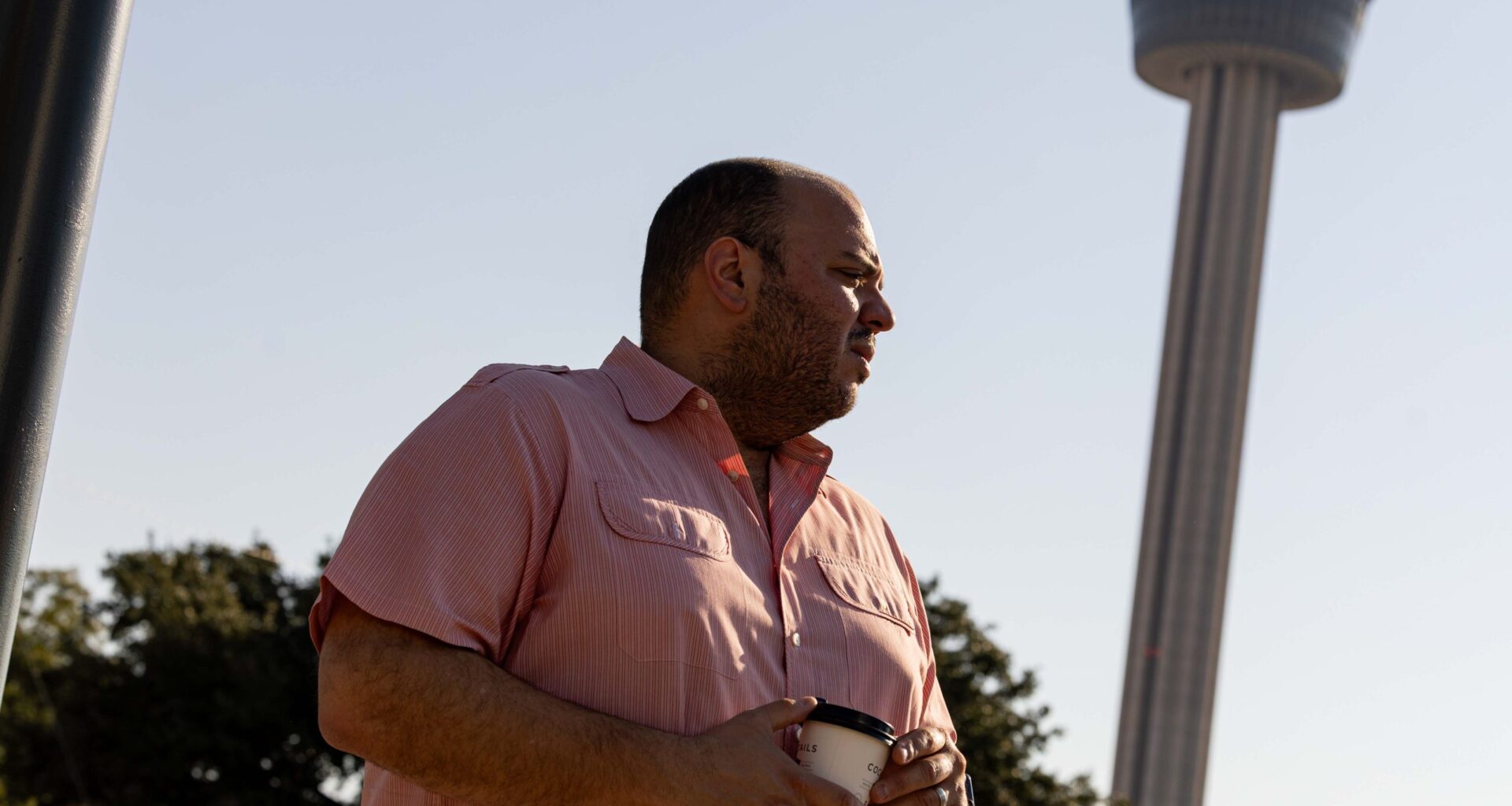When city contractors started digging up the roadway along South Alamo Street in late 2022, they were supposed to finish the job in two years.
Local businesses have already experienced nearly three years of construction delays, lost customers and dwindling revenue. Now the project won’t be finished until spring.
Everyone — from business owners to city officials — say something needs to be done to help ailing establishments and bring customers back.
“We’re not trying to fight the city, we just want answers and resolution,” said Efren Moreno, owner of Blush, a South Alamo Street restaurant and bakery.
Moreno’s attitude is echoed by neighbors from La Villita to Hemisfair to Southtown. Many understand the need for better streets and safer pedestrian access, but the cost has been steep.
“This is the gateway to Southtown,” said Miles Donnelly, owner of La Frite, a South Alamo Boulevard restaurant that serves Belgian and French food.
“Optically, it looks like the whole area is shut down,” Moreno added.
When the project started, business owners saw a drop in foot traffic and walk-in customers. Tourists staying near the River Walk are less likely to pick their way through the construction zone, both business owners say, and locals are worried about traffic and parking options.
“You’re asking people to take a massive detour through traffic to get to us,” Moreno said.
Impacts aren’t just cosmetic, businesses are feeling the squeeze.
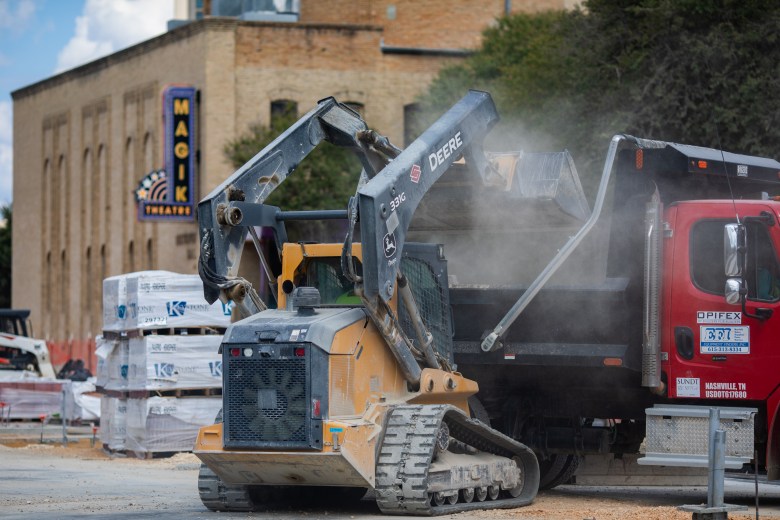 Construction continues to block pedestrian traffic near the entrance to the Magik Theatre. Credit: Vincent Reyna for the San Antonio Report
Construction continues to block pedestrian traffic near the entrance to the Magik Theatre. Credit: Vincent Reyna for the San Antonio Report
The Magik Theatre, for example, has lost $300,000 in revenue during the construction. Melissa Zarb-Cousin, the managing director of the kid’s theater, added that the nonprofit has cut seven or eight full-time positions.
The theater is adjusting, she said, and looking for fundraising opportunities. City officials have helped the theater plan alternate routes to help bring in school field trips, but that can only help so much.
“It doesn’t help with the perception that things are closed,” she said.
‘We need to do more’
City officials say they’re listening. Mike Shannon, new director of the city’s Capital Delivery Department, said he’s tried to meet with businesses and listen to their concerns and ideas.
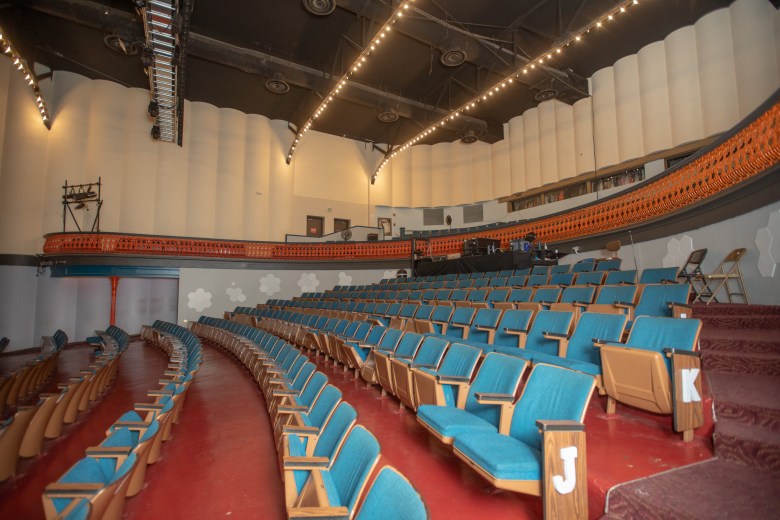 View of the seats inside the Magik Theatre Credit: Vincent Reyna for the San Antonio Report
View of the seats inside the Magik Theatre Credit: Vincent Reyna for the San Antonio Report
“We’ve done a lot, but we need to do more,” Shannon said. “We’re working on additional signage, wayfinding, helping people and residents get through that, whether it’s in cars or on foot, making sure that people can get to their businesses at the same time. [We’re] really pushing our contractor to finish as much as they can, as fast as they can.”
Business owners said they’ve noticed some improvements. Moreno and Donnelly both wanted to ensure that one lane would remain open when construction moved into its next phase on South Alamo Street in November.
Shannon said that would be the case, allowing pedestrians and cars to cross East César E. Chávez Boulevard through the end of the project.
Zarb-Cousin said there is routine communication with Sundt, the city’s contractor, and officials, but there’s still room for improvement.
“There is an improved cadence of communication, however they can offer no reassurance as to when we’re going to reopen and what we need to do between now and then,” she said.
So many deadlines have been missed that locals have a hard time trusting a new spring deadline.
“What happens on March 1 when it’s not done?” asked Donnelly.
Donnelly noted that payments for rent and mortgages and wages can’t just stop or be suspended. Moreno, Zarb-Cousin and their neighbors have improvised with different kinds of shows and offerings, but there’s a limit to how far that can go.
“It’s definitely challenging,” Moreno said. “Any reduction in guest visits at this point would probably be detrimental to our success.”
What caused the delay?
How did a two-year project last more than three years?
“The main factor of the delays is really centered around unforeseen stuff for underground utilities,” Shannon said.
Shannon said that led to redesigns on the project. Certain pieces of infrastructure were not where engineers and contractors thought they would be.
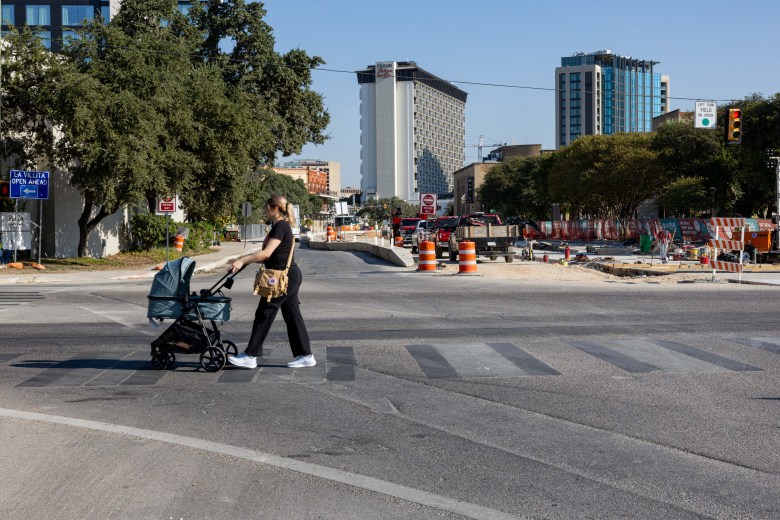 Since construction began, businesses have seen drastic drops in foot traffic from walking customers and tourists along South Alamo Street and the La Villita and Hemisfair areas. Credit: Amber Esparza / San Antonio Report
Since construction began, businesses have seen drastic drops in foot traffic from walking customers and tourists along South Alamo Street and the La Villita and Hemisfair areas. Credit: Amber Esparza / San Antonio Report
“That’s where the challenge comes in, is when something’s not exactly where we think it was or documented,” Shannon said. “You know, so many decades ago, even a slight change can cause us to go, ‘Hey, we have to go redesign something.’”
Now, city officials are meeting with contractors regularly and trying to move things along. Utility work on water and power infrastructure is done, Shannon added, making city officials more optimistic about their spring deadline.
Not the first time
Work on South Alamo Street is funded using money from a 2017 bond. It’s not the only bond project to have had delays impacting local businesses. Work on Zona Cultural streets near Milam Park and the Historic Market Square has also been delayed for similar reasons.
“The underground utility over on Santa Rosa Street became a challenge as well,” said Shannon. “That one was planned to be done earlier this year, this spring, and now we’re looking at November.”
Over on North St. Mary’s Street, sales plummeted for businesses in 2022 when a similar bond project was taking place there. The year before, delays hit Broadway Street construction and businesses.
Shannon said that led to an agreement between the San Antonio Water System and the city to improve communication and efficiency on these projects by addressing some of these issues earlier in the process.
City officials are evaluating contractors and considering their past performance when handing out future projects, Shannon added. After a project, city officials will look at consequences for delays and overages.
There have been grant programs for businesses and nonprofits that are affected.
Zarb-Cousin said Magik Theatre received a $35,000 city grant due to the construction. It was helpful, she said, but didn’t cover the $300,000 shortfall the theater faced. Local donors stepped in to make up that gap, she said, helping the them stay afloat.
“I’m really pleased and grateful with how San Antonio has responded,” she said. “We have not stopped business, we are still rocking and rolling. We need people to come more than ever.”
Some businesses owners found they aren’t eligible for the grant.
Moreno, for example, opened Blush in 2023. The grant is only for businesses founded in 2022 or earlier.
Inflation has made it difficult to demonstrate losses in revenue on a year to year basis, Moreno and Donnelly said, because costs and prices have changed.
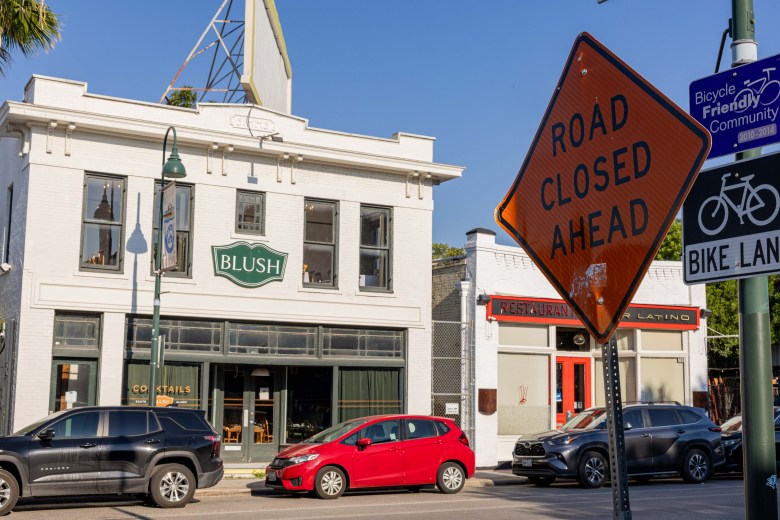 Southtown bakery and restaurant Blush opened on South Alamo Street in March of 2023. Construction in the area began the year prior, in 2022, and is still ongoing in 2025. Credit: Amber Esparza / San Antonio Report
Southtown bakery and restaurant Blush opened on South Alamo Street in March of 2023. Construction in the area began the year prior, in 2022, and is still ongoing in 2025. Credit: Amber Esparza / San Antonio Report
Despite all of that, Moreno and Donnelly aren’t upset about improvements. They see the need for new streets. They’re in favor of Project Marvel, the proposed new Spurs arena on the ballot next month, and bringing more business and activity downtown. They just want their businesses to make it to that point.
“It doesn’t seem like there’s been a clear path for how to complete these things in a timeline that works for the city, the contractor and the businesses that surround it,” Moreno said.
